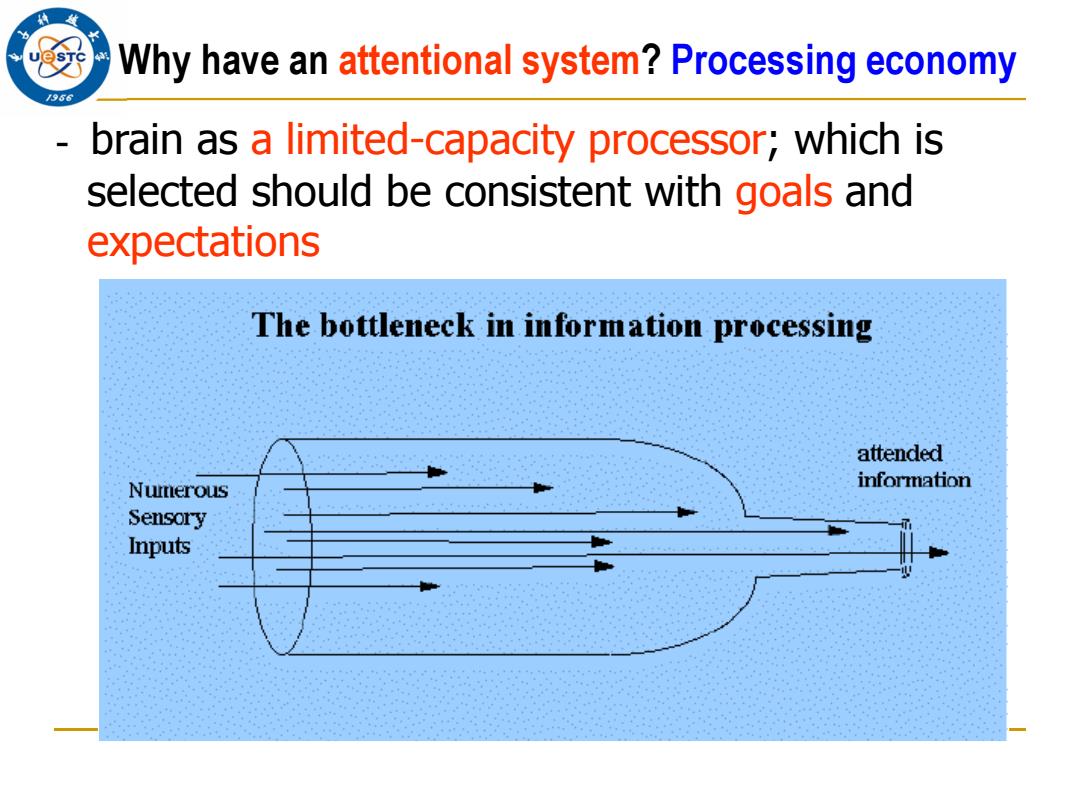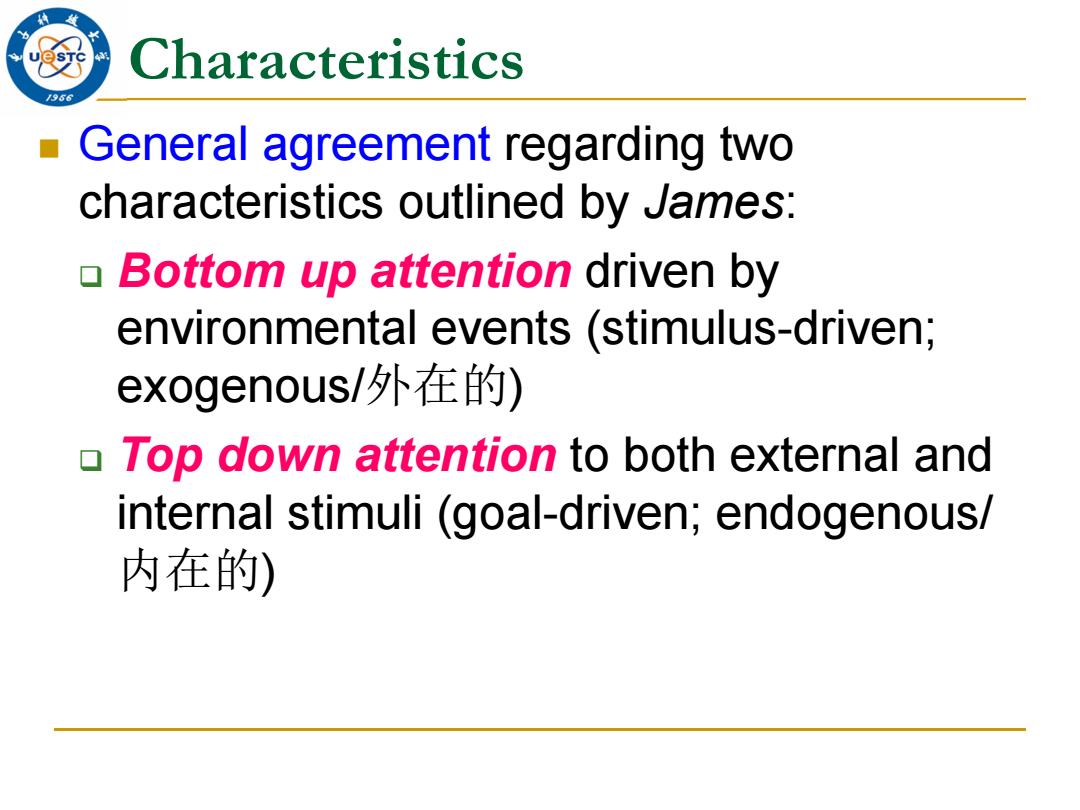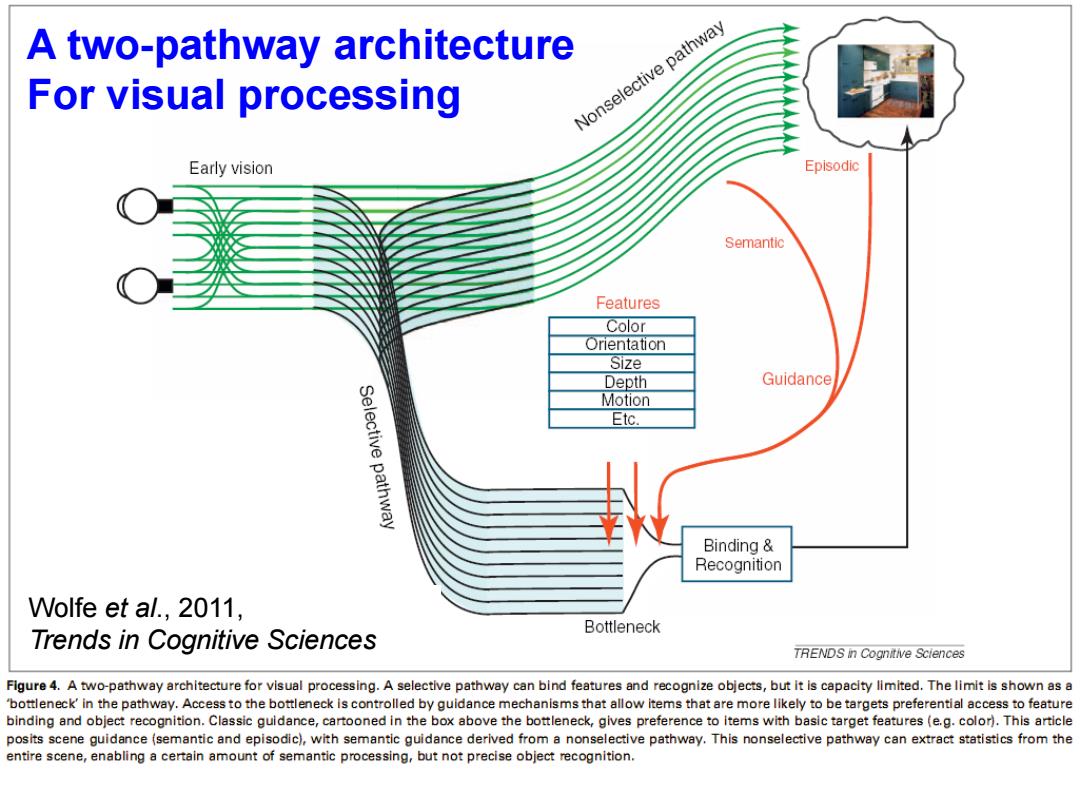
Why have an attentional system?Processing economy /986 brain as a limited-capacity processor;which is selected should be consistent with goals and expectations The bottleneck in information processing attended Numerous information Sensory Inputs
Why have an attentional system? Processing economy - brain as a limited-capacity processor; which is selected should be consistent with goals and expectations

Characteristics /96 General agreement regarding two characteristics outlined by James: Bottom up attention driven by environmental events(stimulus-driven; exogenous/外在的) o Top down attention to both external and internal stimuli(goal-driven;endogenous/ 内在的)
Characteristics General agreement regarding two characteristics outlined by James: Bottom up attention driven by environmental events (stimulus-driven; exogenous/外在的 ) Top down attention to both external and internal stimuli (goal-driven; endogenous/ 内在的 )

Working memory (decision) Functional Components of Attention Gaze Competitive control selection What gains access Top-down to WM? Sensory Sensitivity Neural Motor control representations Stored memory Intemal state Regulation of Bottom-up channel signal Automatic filtering strength Salience for behavioral filters importance World Knudsen,Ann Rey NSci,2007 Figure 1
Functional Components of Attention Knudsen, Ann Rev NSci, 2007 Automatic filtering for behavioral importance What gains access to WM? Regulation of channel signal strength

A two-pathway architecture For visual processing Nonselective pathway Early vision Episodic Semantic Features Color Orientation Size Depth Guidance Motion Selective pathway Etc. Binding Recognition Wolfe et al.,2011. Bottleneck Trends in Cognitive Sciences TRENDS in Cognitive Sciences Figure 4.A two-pathway architecture for visual processing.A selective pathway can bind features and recognize objects,but it is capacity limited.The limit is shown as a bottleneck'in the pathway.Access to the bottleneck is controlled by guidance mechanisms that allow items that are more likely to be targets preferential access to feature binding and object recognition.Classic guidance,cartooned in the box above the bottleneck,gives preference to items with basic target features (e.g.color).This article posits scene guidance (semantic and episodic),with semantic guidance derived from a nonselective pathway.This nonselective pathway can extract statistics from the entire scene,enabling a certain amount of semantic processing,but not precise object recognition
A two-pathway architecture For visual processing Wolfe et al., 2011, Trends in Cognitive Sciences